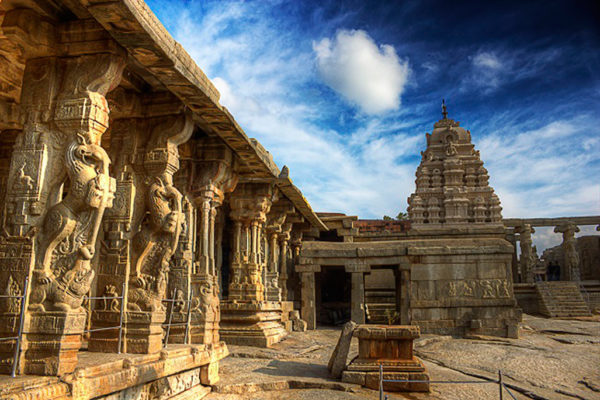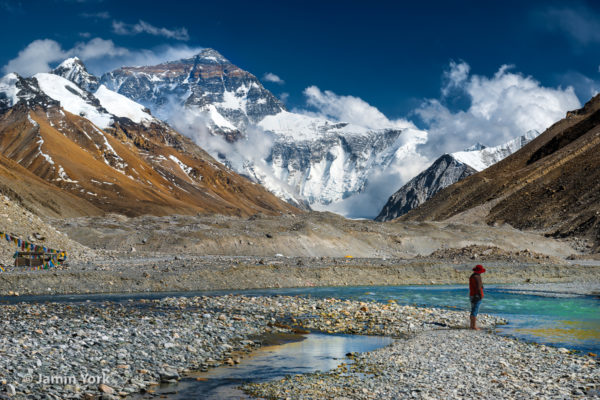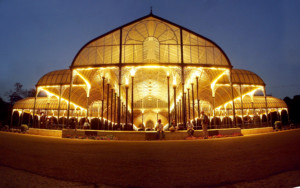In India, almost every religious place, every historical monument, and every place of natural brilliance will have a miracle to witness and a fascinating legend to intervene. Sometimes, the same legend is associated with different places. A colossal rock in a village in Kerala, known as ‘Jatayu Rock’, where the largest bird sculpture in the world is built, is believed to be the sacred spot where the mythical bird Jatayu fell when Ravana chopped off its wings. The same legend prevails in a small village in Andhra Pradesh. Here, the local people believe that the wounded Jatayu fell on a rocky hillock in this village, and when Rama arrived at the spot, he compassionately uttered the words, “Le Pakshi”, which means “Rise, O Bird”, in Telugu. Thus, the place became known as Lepakshi. The legendary Lepakshi is known for the famous Veerabhadra Temple, popularly known as Lepakshi Temple.
What is the Significance of Lepakshi Temple?
Lepakshi temple has its reference in the ancient scripture Skandapurana as one of the 108 most significant Shaivite temples in India. It is also believed that the temple was built by Sage Agastya. As per historians, Lepakshi was a famous center of trade and pilgrimage during the period of Vijayanagara Kings. The temple complex was built in the 16th century, by two brothers Virupanna and Veeranna during the reign of Vijayanagara King Achyuta Devaraya.

Lepakshi temple is situated on a low rocky hill called Kurmasaila, which resembles the unique shape of a tortoise. The temple complex is renowned for the amazing Vijayanagara style of architecture with the magnificence of a 100-pillared Natya Mandapa with intricately carved pillars and exquisite sculptures, a miraculous hanging pillar, timeless paintings on ceilings, colossus sculptures of monolithic Nandi and monolithic Nagalinga, unfinished Kalyana Mandapa, and above all, so many mysteries and legends. Every stone here has a story to tell and every pillar has an episode of an epic. The main deity of the temple is Lord Veerabhadra, the fiery form of Lord Shiva. Other deities worshiped here include Lord Vishnu, Papavinaseswara, Parvati, Bhadrakali, Hanumalinga, Ramalinga, and Sayanagara.
Where is it Located?
Lepakshi is a small village located in Anantapur district of Andhra Pradesh at a distance of 480 km from Hyderabad and 120 km from Bangalore. For those who are looking for a religious vacation from Bangalore, it is a perfect weekend getaway. From Bangalore, one can hire a cab and drive through Bangalore-Hyderabad National Highway NH-44. The road is excellent, and you will enjoy it even if you are a biking enthusiast. From Kodikonda Check Post, take a diversion towards left and drive another 16 km to reach Lepakshi. You can also travel by train and get down at Hindupur railway station, located at 13 km from Lepakshi.
What to See in Lepakshi Temple?
Monolithic Nandi:

The first thing that will greet you at this site is a massive sculpture of Nandi, the sacred bull of Lord Shiva, lying in its characteristic pose at around 200 meters from the main temple complex. This colossal sculpture of Lepakshi Nandi with 15 feet height and 27 feet in length is regarded as the biggest monolithic Nandi in the country. It is a remarkable piece of artistic beauty with perfectly proportioned limbs, beautifully carved ornaments, and excellent workmanship.
Main Temple:
Lepakshi temple has two high-walled enclosures. The outer enclosure has three entrances, of which the northern entrance is the main entrance with a gopura, and also having a mandapa on each side of the passage in the front and rear side of the gopura.

The inner enclosure has its main entrance from the north, which has an intricately decorated gopura built in two sections. The Dwajasthambha (flag post) and the Balipitha can be seen near this gopura.
The main temple is structured in three parts namely the Natya Mandapa (Dance Hall), Ardha Mandapa (Antechamber), and Garbha Griha (Sanctum sanctorum).
Natya Mandapa:
Natya Mandapa also called as Ranga Mandapa, which is renowned as the 100-pillared dance hall, is the most remarkable part of Lepakshi Temple. It has intricately carved pillars, sculptures, and paintings that depict the unbelievable talents of the architects of the Vijayanagara era.

The pillars of the central part of the mandapa will mesmerize you with life-like sculptures of gods and goddesses playing musical instruments and dancing. You can see Shiva performing Nataraja Tandava, Brahma playing the drum, Narada on Tamburu, nymphs in dancing postures and many heavenly artists playing drums and cymbals and creating a dream world of divine melodies. The ceiling of the hall is covered with beautiful mural paintings depicting the scenes from Ramayana, Mahabharata and other scriptures.
Ardha Mandapa and Garbha Griha:

Sculpture of a dwarapalaka can be seen on both side of the entrance of Ardha Mandapa and its ceiling is adorned with beautiful frescoes of the 14 incarnations of Lord Shiva. The 24 feet x 14 feet fresco of Lord Veerabhadra on the ceiling is said to be the largest single fresco in India. The Sanctum Sanctorum has a magnificent life-size image of Lord Veerabhadra, and the ceiling of the sanctum has the paintings of Veeranna and Virupanna, depicted in praying pose.
The Miraculous Hanging Pillar:

In the main hall in front of the shrine, there is a hanging pillar, the base of which does not touch the floor, which is an amazing piece of architectural wonder that has puzzled several experts. It is said that once a British engineer tried to make this Lepakshi temple pillar to touch the ground, but his attempt became unsuccessful as he realized that it would result in a distortion of the roof and realignment of the nearby pillars, which would collapse the entire structure. It is believed that this miraculous pillar was intentionally built to demonstrate the architectural brilliance of the Vijayanagara builders.
Unfinished Kalyana Mandapa:
Kalyana Mandapa or Marriage Hall is an open structure behind the main temple in the inner enclosure, which has 38 pillars with intricate carvings of several sages, gods, Dhanwanthari, and the 8 Digpalakas. It is believed that Shiva and Parvati got married at this mandapa. Wonderful carvings depicting the marriage of Shiva and Parvati can be seen on the pillars.

Construction of this mandapa seems to be unfinished and again there is a legend behind it. Virupanna, the royal treasurer was alleged of cheating the king by utilizing the funds from the treasury without the King’s permission and the enraged king ordered Virupanna to be blinded. However, unable to bear the false accusation, Virupanna blinded himself and threw his eyes on the wall. Two red spots still seen on the wall near the Kalyana Mandapa are said to be the marks left by his bleeding eye. “Lepa-akshi” also means “Blinded Eye”!
Nagalinga and Shivalinga:

Behind the main temple, on the south-east corner of the inner enclosure is a mandapa, near which, on a granite base, there is a magnificent rock-cut sculpture of a huge serpent with three coils and seven hoods, which is regarded as the largest Nagalinga in the country. The seven hoods form like a canopy and protect a granite Shivalinga positioned in the center of the top coil. Legend says that this sculpture was cut out by the artisans within an unbelievably short duration while waiting for their meals getting prepared during the lunch break.
Behind the Nagalinga, there is a huge rock with carvings and a monolithic rock-cut sculpture of Lord Ganesha next to it.
Lata Mandapa:

Near the Kalyana Mandapa, there is another mandapa called Lata Mandapa or the Hall of Creepers. The pillars of this mandapa are carved with some beautiful designs and intricate motifs of flowers and birds, which are still used as the famous Sari border designs of Lepakshi. Hundreds of such designs can be seen on several pillars.
Other Attraction near Lepakshi
There are many other popular places to visit near Lepakshi, such as the famous Vidurashwatha, which can be clubbed together with the Lepakshi trip.
Vidurashwatha is a popular place of religious and historical significance, located at about 30 km from Lepakshi. It is believed that Vidura, one of the most respected characters in Mahabharata, planted an Ashwatha tree (fig tree) in this village and the name Vidurashwatha is derived from it. Ruins of this ancient tree can be seen here. Devotees who worship serpent gods come here seeking the blessings of the Lord for a specific boon, like marriage or offspring. After fulfilling the boon, the devotees visit here again and place Nagaprathishta (serpent stones) as vowed by them. You can see thousands of serpent stones placed here by the blessed devotees.

Vidurashwatha is also a place of great historical significance. It is known as the “Jallianwala Bagh of the South”. A tragic incident, similar to the Jallianwala Bagh massacre, happened here during the freedom struggle in 1938, killing 35 villagers in a police firing. There is a memorial bearing the names of the martyrs who sacrificed their lives in that incident.
Travel Tips
October to February is the best time to visit Lepakshi Andhra Pradesh when the weather is pleasant. Make the visit in the morning hours, preferably.
The temple is functional with pujas and rituals. Hence, respect the customs and practices of the temple. Photography is not allowed inside the shrines.
Carry sufficient drinking water. Do not expect food or modern facilities at the site. There is a good restaurant of Andhra Pradesh Tourism Development Corporation (APTDC) at the junction of Kodikonda Check post, from where you took a diversion towards Lepakshi. Enjoy delicious food at this restaurant.












Excellent web site. Lots of helpful information here. I抦 sending it to some friends ans additionally sharing in delicious. And of course, thanks to your effort!
Hi
your temple photos are very nice
I have interested in Indian culture
Any other information of them
Please send me.
Hi,
Thanks for the appreciation.
Keep checking https://www.realbharat.org for new updates, we are also planning to start Yoga series in next month.
Thanks
Amit.
Your photographs of Lepakshi temple are excellent. Would like to have you contact information.
Hi Uma,
You can contact us at amit@realbharat.org or blackbeardgroup@gmail.com
Your photographs of the temple are excellent. Would like to have you contact information.
You have done excellent home work, Ramakrishnan! Nicely narrated. Keep writing !!!!
Thanks a lot for your encouraging words.